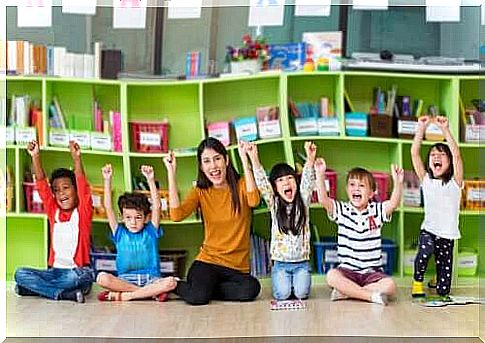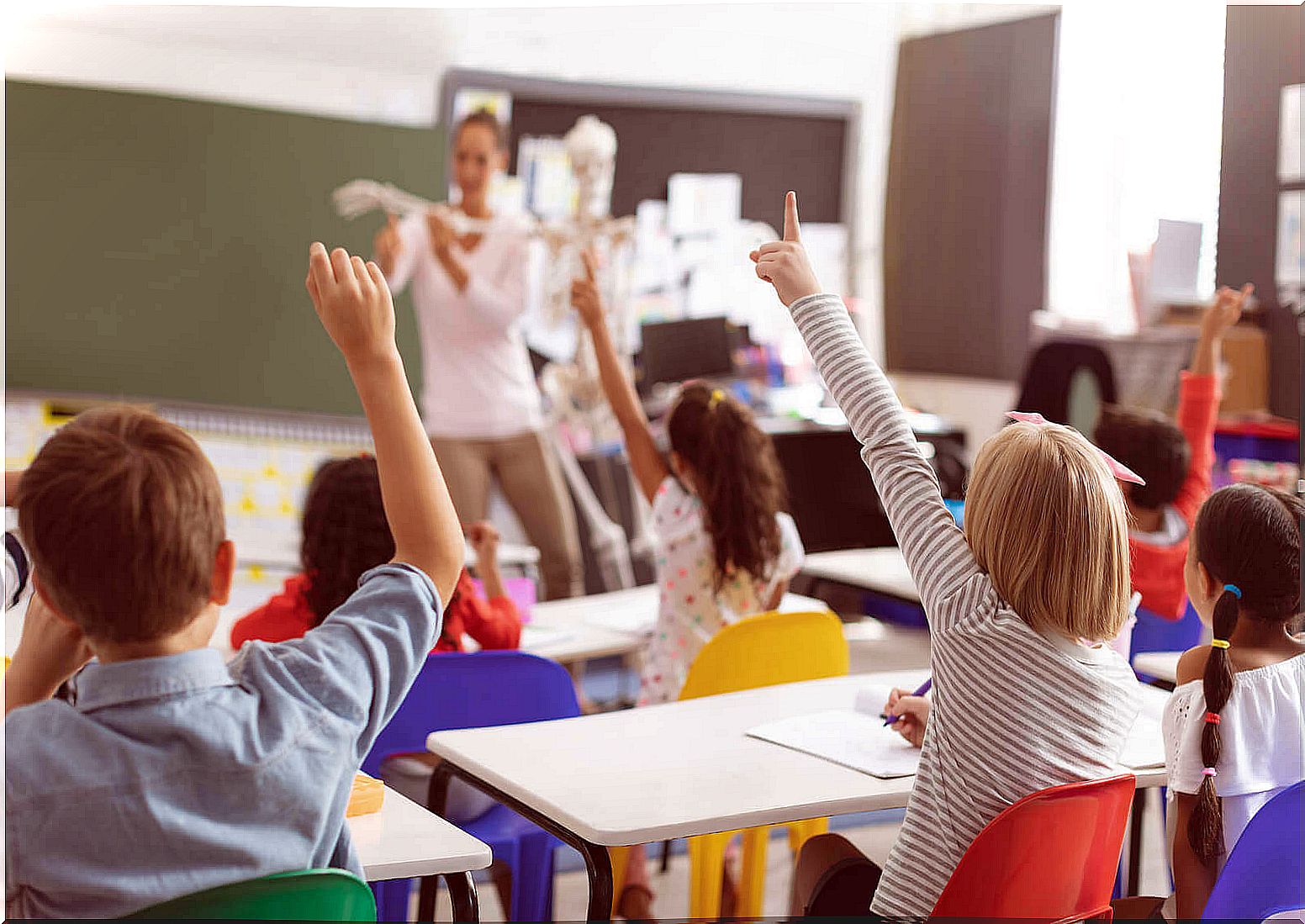Strategies For Building Resilience In The Classroom

It is important that children are taught in school to deal with the problems and difficult situations that will arise throughout their lives. For this reason, teachers must know and apply strategies to promote resilience in the classroom and help students develop this ability to recover in the face of adversity.
Resilience, the strength of a reed
Resilience is a word that seems to be very fashionable these days. However, it is a capacity that is timeless, as developing resilience, or learning to be a resilient person, is essential to living more fully at any time and time in life.
Thus, in psychology, the word resilience refers to a person’s ability to overcome or recover from traumatic circumstances, such as an accident or the death of a loved one.
However, the capacity for resilience can be extended to any other situation that might be difficult for a person or that involves a great deal of pressure for them. Furthermore, it also has to do with the ability to learn and come out stronger in a difficult situation.

Therefore, sometimes, resilience or people with the ability of resilience resemble a reed, as they are characterized precisely by their ability to resist, if they try to bend them, without actually breaking.
Resilience and children
It is important to teach children to be resilient, both at home and at school, so that, from an early age, they are able to make mistakes and learn from their mistakes. It is also helpful for them to learn to manage their emotions and control their fears, as well as avoiding anxiety. And for them to develop positive self-esteem and express their full potential.
In short, teaching children to be resilient implies positively influencing their capacity for social and affective relationships with others and in different situations.
In addition, the ability to resilience can help children with their own learning processes and to deal better when they make mistakes or fail, encouraging them to want to try again, in this case, the tasks and school lessons, as often as necessary until succeed.
Thus, it is important to consider strategies that promote classroom resilience. On the one hand, it helps children, from an early age, to begin to develop a skill that will be needed in their future lives. And, on the other hand, because, in parallel with the development of their own resilience skills, children can also improve their own learning processes.
Strategies for Promoting Classroom Resilience
- Encourage dialogue and debate, and work on issues such as fear or how each person faces problems . This is a good strategy for elementary school students or pre-teens and aims to make students open up and feel more confident in sharing their feelings with their peers. Thus, students will be able to realize that all people live or go through difficult sensations and situations. They will also be able to learn about the way their peers try to deal with these situations to resolve them.
- Practice mindfulness or “mindfulness” with students. Planning a few mindfulness sessions in the classroom has great benefits when it comes to managing emotions and stress. It has been shown that the practice of this technique helps people to better deal with difficulties and to adopt optimistic, positive and creative attitudes towards problems. So the mindfulness can be a great tool that progressively contribute to the learning and acquisition of resilience by children.
- Play sports and play activities . The rules of the game in any sport imply the acceptance of certain conditions and the promotion of values that help in the development of resilience, such as respecting the other person’s turn, not being violent, helping the colleague, working as a team and accepting defeat. In turn, the game allows children to express themselves freely, show their interests and preferences and develop their potential to the fullest.

On strategies to promote classroom resilience
In addition to those already mentioned, there are also other strategies to promote resilience in the classroom. Some of them are strategies or, in any case, well-studied and developed methodologies that have a direct impact on the development of resilience, as they allow the development of attitudes and behaviors related to resilience.
More specifically, we are talking about methodologies such as Problem-Based Learning or Problem-Based Learning (PBL), which aims to make students learn to solve problems through research and the search and analysis of information, as well. as from discussion, debate and teamwork.
In turn, closely related to PBL methodology, the learning or cooperative work is also an excellent strategy to promote resilience in the classroom, since cooperative learning methodology is based on teamwork to learn the responsibility values , companionship and empathy.
In this way, social relationships and positive interdependence between people are promoted to solve problems. This is essential in acquiring resilience capability.









